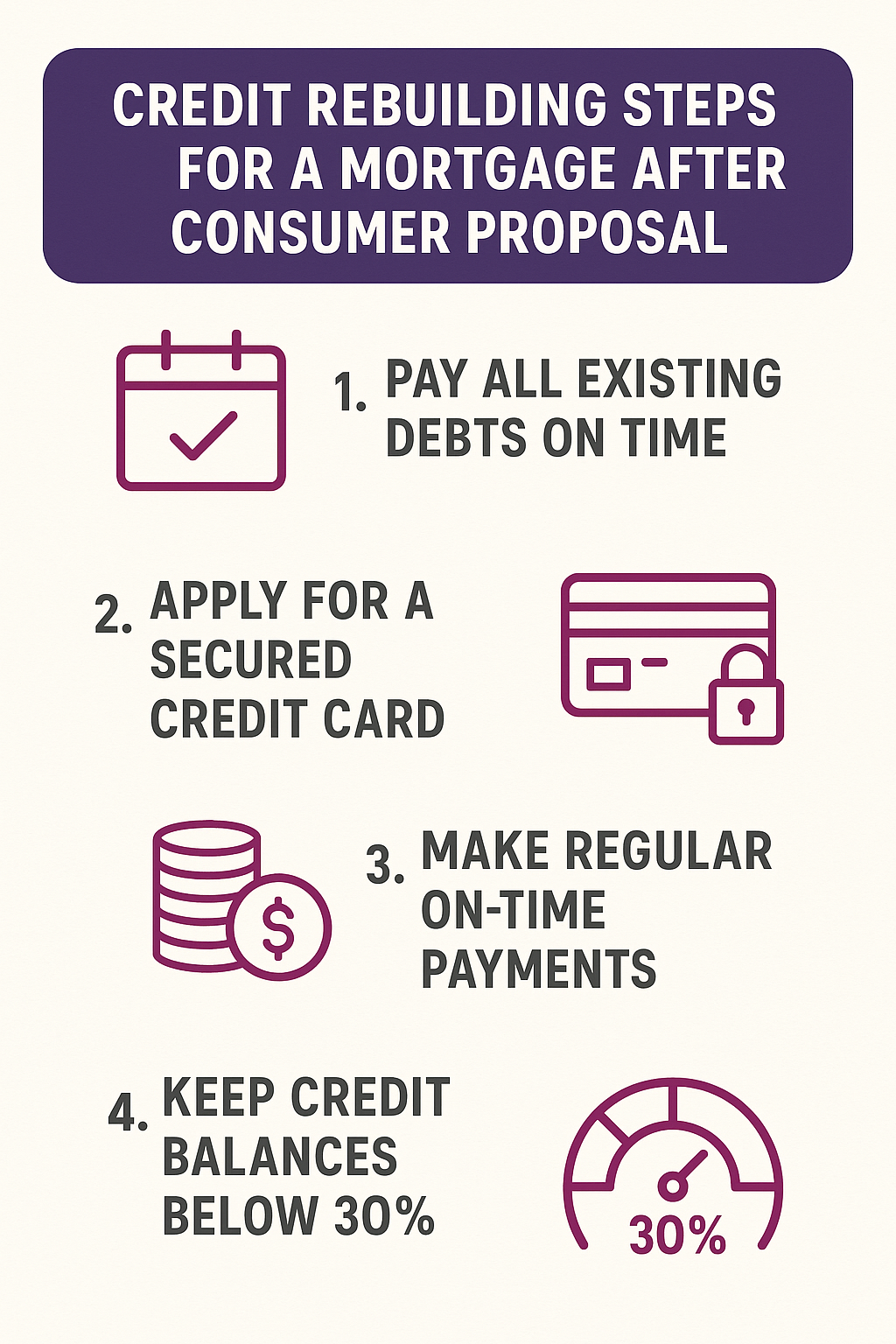The Critical Differences Between a HELOC and a Home Equity Loan Every Canadian Homeowner Must Know
When you’ve built up equity in your home, it can feel like you’re sitting on a powerful financial tool — and you are. Two of the most common ways to unlock that equity are a HELOC (Home Equity Line of Credit) and a home equity loan.
On the surface, they sound similar. Both use your home as security. Both can be used for renovations, debt consolidation, investments, or big purchases. But the way they work — and how they affect your cash flow and long-term plans is very different.
In this guide, we’ll walk through exactly what sets a HELOC apart from a home equity loan, with a focus on Canadian homeowners. By the end, you’ll have a clear idea of which option fits your goals, your budget, and your comfort with risk.
Table of Contents
ToggleWhat Is Home Equity?
Before comparing a HELOC and a home equity loan, it helps to be crystal clear on home equity itself.
Home equity is the difference between:
Your home’s current market value
minus
The total amount you still owe on mortgages and registered liens.
Example:
-
Home value: $800,000
-
Mortgage balance: $500,000
-
Other secured loans on title: $20,000
Home equity = $800,000 – $520,000 = $280,000
Lenders in Canada will usually let you borrow up to a certain percentage of your home’s value (often around 80% of the appraised value, including your existing mortgage), depending on the product, your income, your credit, and the lender’s policies.
That’s where HELOCs and home equity loans come into play.
What Is a HELOC (Home Equity Line of Credit)?
A Home Equity Line of Credit (HELOC) is a revolving line of credit secured against the equity in your home. Think of it as a massive, reusable credit card limit, but with an interest rate that is usually much lower than regular unsecured credit.
Key features of a HELOC in Canada
-
-
You’re approved for a maximum limit (for example, $200,000).
-
You can borrow, repay, and borrow again as long as you stay within your limit.
-
-
Variable interest rate:
-
Most HELOCs are tied to the lender’s prime rate (e.g., prime + 0.50%).
-
Your payment can change when prime moves.
-
-
Interest-only minimum payments:
-
Typically, the minimum payment is interest only, which keeps monthly payments low.
-
You can pay extra toward the principal at any time.
-
-
Flexibility:
-
Access funds when you need them for renos, investments, or emergencies.
-
No need to re-apply every time, provided you’re within your limit.
-
-
Secured against your home:
-
Because your home is collateral, rates are usually lower than credit cards and unsecured lines of credit.
-
What Is a Home Equity Loan?
A home equity loan (sometimes called a second mortgage or home equity term loan) is a one-time lump sum borrowed against your equity, with a fixed schedule to pay it back.
Key features of a home equity loan in Canada
-
Lump-sum advance:
-
You receive the entire amount upfront (for example, $80,000).
-
Once funded, you can’t redraw from that same loan without re-applying.
-
-
Usually a fixed rate:
-
Many home equity loans carry a fixed interest rate, which means predictable payments for the term.
-
-
Blended principal + interest payments:
-
Regular payments include both principal and interest, similar to a traditional mortgage.
-
Each payment reduces your balance over time.
-
-
Set term and amortization:
-
You agree to a term (e.g., 1–5 years) and often an amortization (e.g., 15–25 years).
-
There’s a clear timeline for when the loan will be fully repaid.
-
-
Secured against your home:
-
It is registered on title, often as a second mortgage if you already have a primary mortgage.
-
7 Powerful Differences Between a HELOC and a Home Equity Loan
Now, let’s break things down into the 7 key differences every Canadian homeowner should understand before choosing one over the other.
1. How You Receive the Money
HELOC:
-
Works like a reusable credit line.
-
You can draw funds as needed, up to your approved limit.
-
Ideal for ongoing or unpredictable expenses, like multi-stage home renovations or recurring investment opportunities.
Home Equity Loan:
-
You receive one lump sum at closing.
-
Great for one-time, well-defined needs, like paying off high-interest debt or funding a specific project.
Ask yourself:
Do I know exactly how much I need now, or will my needs be spread over time?
2. Interest Rate Type: Variable vs. Fixed
HELOC:
-
Typically variable rate, tied to prime.
-
When the Bank of Canada or your lender changes prime, your rate (and minimum payment) can go up or down.
-
Better if you’re comfortable with some payment fluctuation.
Home Equity Loan:
-
Frequently fixed rate for the term.
-
Your payment stays the same each month for that term.
-
Ideal if you want stability and predictability in your budget.
Ask yourself:
Would rising rates put serious pressure on my monthly cash flow?
3. Monthly Payment Structure
HELOC:
-
Minimum payment is usually interest only.
-
This keeps payments lower, but:
-
If you only pay interest, your balance doesn’t go down.
-
You must be disciplined to pay extra if you want to pay off the HELOC over time.
-
Home Equity Loan:
-
Payments include both principal and interest.
-
Your balance drops with every payment, and the loan is on a scheduled path to be paid off.
Ask yourself:
Do I need the lowest possible payment today, or do I want a structured plan that forces me to pay down the debt?
4. Flexibility vs. Discipline
HELOC:
-
Extremely flexible:
-
Access, repay, and re-access funds anytime during the revolving period.
-
-
However, that flexibility can be a double-edged sword:
-
Some homeowners re-borrow repeatedly, keeping their balance high for years.
-
Home Equity Loan:
-
Less flexible, more structured:
-
You can’t just redraw money once it’s paid down without re-qualifying.
-
-
This naturally builds discipline, since your loan amount only goes one way: down.
Ask yourself:
Am I very disciplined with credit, or do I prefer built-in guardrails?
5. Best Uses for Each Option
HELOC is often best for:
-
Ongoing or phased home renovations.
-
Building an emergency fund or safety net.
-
Short-term borrowing where you plan to pay the balance down quickly.
-
Investments where you may borrow and repay multiple times (talk to your tax professional about interest deductibility).
Home Equity Loan is often best for:
-
Debt consolidation: rolling high-interest credit cards, personal loans, or lines of credit into one structured loan.
-
Paying off a consumer proposal or tax arrears.
-
A specific large purchase or project with a clearly defined cost.
-
Situations where you want a clear payoff date and consistent payments.
Ask yourself:
Is my main goal flexibility, or a one-time structured solution?
6. Fees, Legal Costs, and Setup
Both HELOCs and home equity loans typically involve:
-
Appraisal fees (to confirm your home’s value).
-
Legal or closing costs for registering the new charge on title.
-
Possible discharge or refinance fees from your existing lender.
HELOC:
-
Some lenders offer lower upfront fees if combined with a new first mortgage.
-
May charge annual fees or transaction fees, depending on the lender.
Home Equity Loan:
-
Often comes with one-time setup and legal fees, especially with private or alternative lenders.
-
In some cases, fees may be deducted from the advance.
Costs vary widely between A-lenders, B-lenders, and private lenders in Canada, so it’s wise to compare — or work with a broker who does that for you.
7. Risk and Impact on Your Long-Term Plan
Both options are secured by your home, which means:
If you default on payments, the lender could ultimately enforce a sale or power of sale/foreclosure process.
HELOC risks:
-
Because it’s easy to access, balances can creep up over time.
-
Rising interest rates can increase your payment, sometimes significantly.
Home Equity Loan risks:
-
Payments are higher than HELOC interest-only payments because principal is included.
-
However, this structure reduces your balance and helps you avoid long-term “interest-only forever” traps.
Ask yourself:
How does each option fit my long-term plan to own my home outright and reduce debt over time?
HELOC vs Home Equity Loan in Canada: Quick Comparison Table
| Feature | HELOC (Home Equity Line of Credit) | Home Equity Loan (Term Loan/2nd Mortgage) |
|---|---|---|
| How funds are received | Draw as needed, up to a limit | One lump sum at closing |
| Rate type | Usually variable, tied to prime | Often fixed for the term |
| Payment type | Typically interest-only minimums | Principal + interest |
| Flexibility | Very flexible, revolving credit | Structured, no re-borrowing without new approval |
| Best for | Ongoing needs, renos, emergencies, short-term | Debt consolidation, one-time large expenses |
| Risk profile | Payment can change with rate increases | More predictable payments |
| Discipline required | High – easy to re-borrow | Built-in – balance decreases with each payment |
How Canadian Lenders Qualify You
Whether you’re considering a HELOC or a home equity loan, lenders in Canada will look at factors such as:
-
Home value and loan-to-value ratio (LTV)
-
Total mortgage + new HELOC/loan usually can’t exceed a certain percentage of the home’s value (commonly around 80% with many institutional lenders).
-
-
Income and debt ratios
-
Your debt-to-income ratio and ability to handle payments under the mortgage stress test (for many regulated lenders).
-
-
Credit score and history
-
Stronger credit can mean better rates and more options.
-
If you’ve had late payments, collections, or a consumer proposal, alternative or private lenders may still offer solutions, but at different terms.
-
-
Property type and location
-
Lenders may be more flexible in urban areas and major centres, with stricter guidelines for rural or unique properties.
-
This is where working with a mortgage broker can make a big difference. Instead of you trying to decode each lender’s rules, a broker helps match your scenario to the right lender and product mix.
How to Choose: HELOC or Home Equity Loan?
Here’s a simple step-by-step way to narrow it down:
Step 1: Define Your Primary Goal
-
Debt consolidation?
-
A home equity loan often wins because of fixed payments and a clear payoff schedule.
-
-
Renovations over time or ongoing projects?
-
A HELOC can be more practical, since costs may change and come in phases.
-
-
Emergency safety net or buffer?
-
A HELOC provides flexible access without needing to borrow all at once.
-
Step 2: Decide How Much Payment Fluctuation You Can Handle
-
If you’re comfortable with some variability and plan to pay things down aggressively, a HELOC can work.
-
If your budget is tight and you don’t want surprises, a home equity loan with a fixed rate can be safer.
Step 3: Be Honest About Your Spending Habits
-
If you’re disciplined and treat your HELOC as a tool, not a piggy bank, the flexibility is powerful.
-
If you worry about “tapping into it” too often, a one-time home equity loan might protect you from yourself.
Step 4: Get a Professional Review
A mortgage professional can:
-
Review your current mortgage, equity, income, and credit.
-
Show you real-world payment comparisons for both a HELOC and a home equity loan.
-
Explain whether it makes sense to refinance your existing mortgage, add a second mortgage, or set up a HELOC alongside your current mortgage.
Common Myths About HELOCs and Home Equity Loans
Myth #1: A HELOC is always cheaper than a home equity loan.
Reality: While HELOC rates can be lower at certain times, if rates rise, your cost can increase quickly. A fixed-rate home equity loan might end up cheaper over the full term.
Myth #2: You should always borrow the maximum available.
Reality: Just because a lender says you qualify for a certain amount doesn’t mean it’s right for your budget or long-term plan.
Myth #3: You can’t get a home equity loan if your credit isn’t perfect.
Reality: Even with bruised credit, collections, or a consumer proposal, alternative and private lenders may be able to help — often through home equity loans or second mortgages.
Myth #4: Using home equity is always risky.
Reality: Any borrowing comes with risk, but using home equity strategically to consolidate high-interest debt or improve your property can actually strengthen your finances if done carefully.
FAQs: HELOC vs Home Equity Loan in Canada
1. Is a HELOC or home equity loan better for debt consolidation?
For most Canadian homeowners, a home equity loan (or second mortgage) is often better for debt consolidation because:
-
Payments are fixed and predictable.
-
You have a clear end date for when your debt will be gone.
A HELOC can work if you’re highly disciplined, but interest-only payments can tempt you to stretch the debt out for years.
2. Can I have both a mortgage and a HELOC at the same time?
Yes. Many lenders offer readvanceable mortgages, combining a traditional mortgage with a HELOC. As you pay down the mortgage, your available HELOC limit can increase (within allowed LTV limits).
3. Is interest on a HELOC tax-deductible in Canada?
It depends on how you use the funds. In some cases, if you use HELOC funds for investment purposes that produce income, the interest may be tax-deductible. This is a complex area always talk to a qualified tax professional or accountant before relying on tax deductions.
4. Can I switch from a HELOC to a home equity loan later?
Often, yes. Many lenders allow you to convert all or part of your HELOC balance into a fixed-rate term loan. A mortgage broker can help you compare whether converting, refinancing, or switching lenders is in your best interest.
5. Which is easier to qualify for: a HELOC or a home equity loan?
It varies by lender. Some A-lenders may have strict income and credit requirements for HELOCs. In other situations, a home equity loan through an alternative or private lender may be more flexible, especially if:
-
You’re self-employed,
-
Have bruised credit, or
-
Are coming out of a consumer proposal.
Final Thoughts: Use Your Home Equity Strategically, Not Emotionally
Your home is likely your biggest asset, and your equity can be a powerful financial tool — but only if used wisely.
-
Choose a HELOC if you need ongoing flexibility, can handle variable payments, and are very disciplined about repayment.
-
Choose a home equity loan if you want predictable payments, a clear payoff date, and a structured plan to get rid of your debt.
If you’re a Canadian homeowner and still unsure which option is right for you, this is exactly where a mortgage professional shines. They can run real numbers for your situation, compare multiple lenders, and show you how a HELOC or home equity loan fits your short- and long-term goals.
Need a HELOC or Home Equity Loan?
Talk to a mortgage professional today about which option best suits your needs.
- The Critical Differences Between a HELOC and a Home Equity Loan Every Canadian Homeowner Must Know - November 19, 2025
- How to Get a Personal Loan Secured by Home in Canada in 2025 - November 17, 2025
- Debt Consolidation vs. Consumer Proposal in Ontario: Here are 7 Helpful Facts - November 13, 2025






